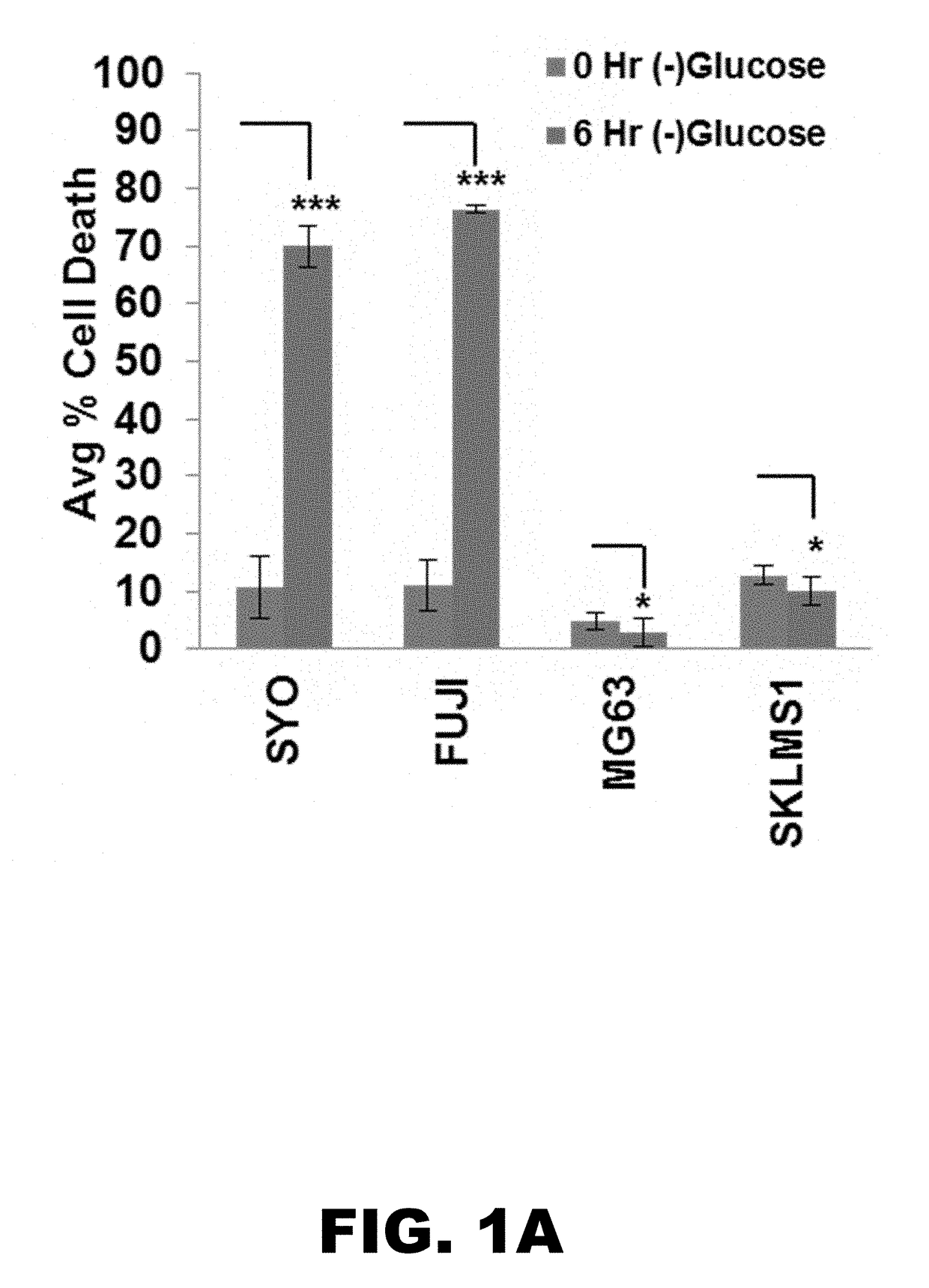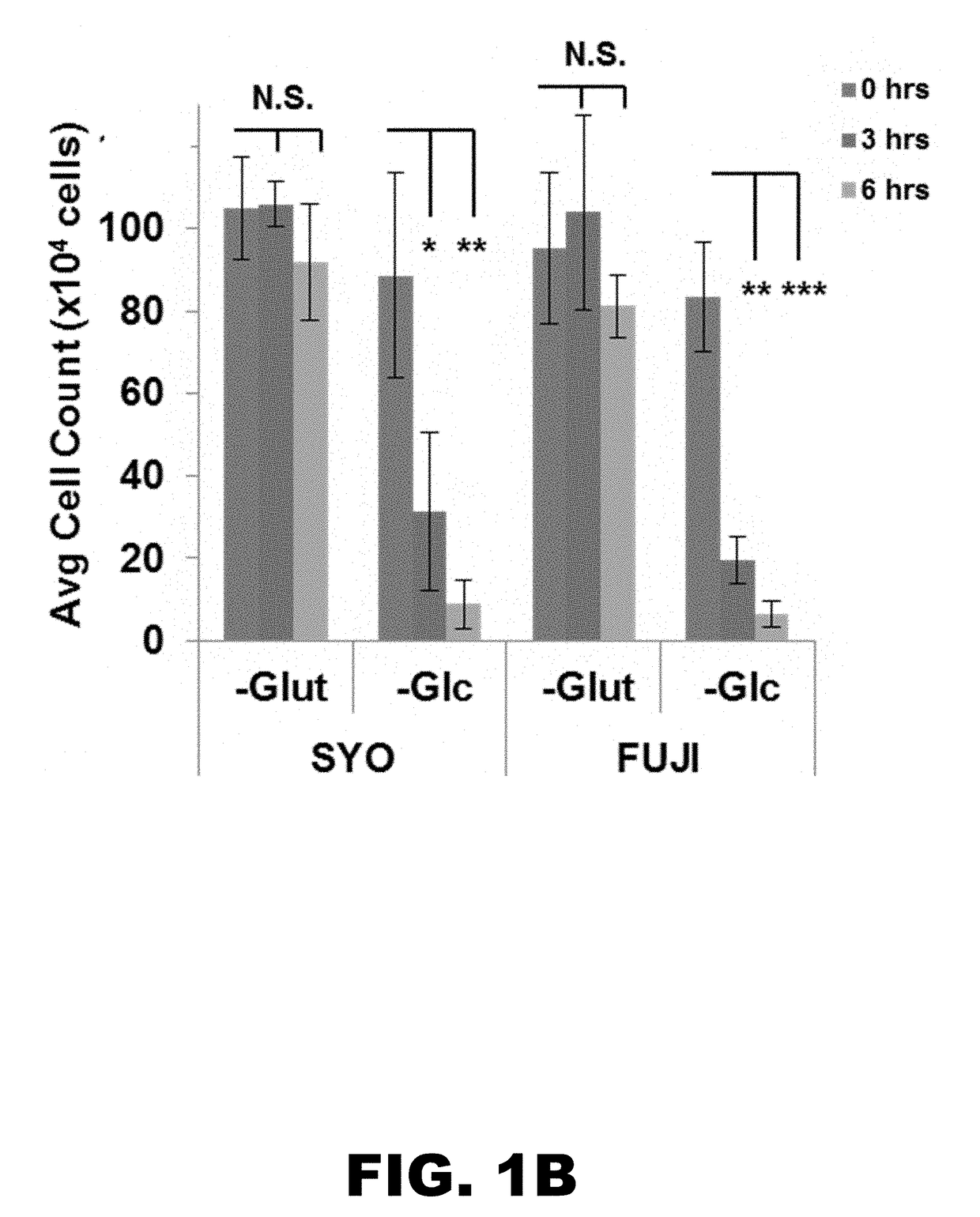Methods of diagnosing and treating cancer comprising me1
a cancer and me1 technology, applied in the field of cancer diagnosis and treatment, can solve the problems of poor long-term overall survival, difficult to draw clear conclusions regarding the prognostic factors, treatment outcomes, survival statistics of ss in adults, and inability to target the treatment of primary or metastatic ss
- Summary
- Abstract
- Description
- Claims
- Application Information
AI Technical Summary
Benefits of technology
Problems solved by technology
Method used
Image
Examples
examples
[0070]The following examples are included to demonstrate various embodiments of the present disclosure. It should be appreciated by those of skill in the art that the techniques disclosed in the examples that follow represent techniques discovered by the inventors to function well in the practice of the invention, and thus can be considered to constitute preferred modes for its practice. However, those of skill in the art should, in light of the present disclosure, appreciate that many changes can be made in the specific embodiments which are disclosed and still obtain a like or similar result without departing from the spirit and scope of the invention.
Introduction to Examples 1-7
[0071]Synovial sarcoma (SS) is a rare and aggressive form of soft tissue sarcoma (STS) with a high metastatic potential. The incidence of SS is estimated at 900-1000 cases per year and accounts for 8-10% of all STS diagnoses in the United States, and is typically diagnosed in young people between the ages ...
example 1
ines are Glucose Addicted
[0074]In an effort to identify unique metabolic properties of the subtypes of sarcoma, thirteen sarcoma and carcinoma cell lines were subjected to glucose withdrawal experiments using propidium iodide (PI) FACS to monitor with cell death (FIG. 1A, FIG. 2). Amongst the cell lines tested, the synovial sarcoma (SS) cell lines SYO-1 and FUJI, both of which harbor the SYT:SSX2 fusion, demonstrated a unique sensitivity to glucose withdrawal, but not glutamine withdrawal (FIG. 1B). Starting at thirty minutes to one hour, a rapid loss of cell adherence was seen by trypan blue exclusion as compared to the control cell lines SKLMS1 and MG63 (FIG. 1A). Unlike a majority of cell lines, which can survive and demonstrate no phenotype at 24 hours of glucose withdrawal, SS cell lines acutely die as early as two hours as seen by PI FACS (FIG. 1C). Eleven other non-translocation dependent sarcoma and carcinoma cell lines were then subjected to glucose withdrawal and PI FACS a...
example 2
ithdrawal Leads to an Energic Death by Ferroptosis
[0076]To determine the mechanism of cell death under glucose deprivation conditions, cells were pretreated with the inhibitor of apoptosis ZVAD and the inhibitor of necroptosis necrostatin. Pretreatment with either ZVAD or necrostatin one hour prior to glucose-free media change did not result in protection from cell death under glucose deprivation conditions (FIG. 3A and FIG. 3B). Additionally, the absence of cleaved parp and cleaved caspase 3 protein under progressive glucose deprivation (0.5, 1, and 2 hours) further confirmed that apoptosis was not the mechanism of cell death (FIG. 4).
[0077]Given the rapidness of SS cell death under glucose deprivation conditions, this suggested an energetic form of cell death. Therefore, the role of ROS in SYO-1 and FUJI cell lines after glucose withdrawal was examined. When SYO-1 and FUJI were pretreated with 10 mM NAC, an antioxidant, one hour prior to glucose deprivation, with the replacement o...
PUM
| Property | Measurement | Unit |
|---|---|---|
| Electrical conductance | aaaaa | aaaaa |
Abstract
Description
Claims
Application Information
 Login to View More
Login to View More - R&D
- Intellectual Property
- Life Sciences
- Materials
- Tech Scout
- Unparalleled Data Quality
- Higher Quality Content
- 60% Fewer Hallucinations
Browse by: Latest US Patents, China's latest patents, Technical Efficacy Thesaurus, Application Domain, Technology Topic, Popular Technical Reports.
© 2025 PatSnap. All rights reserved.Legal|Privacy policy|Modern Slavery Act Transparency Statement|Sitemap|About US| Contact US: help@patsnap.com



